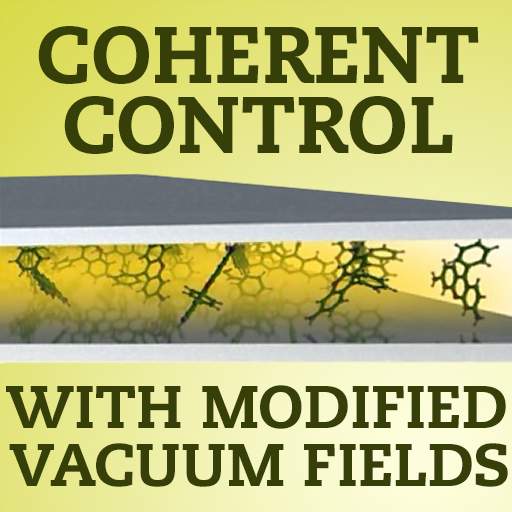Speaker
Description
Strong coupling between photoactive molecules and confined light modes results in the formation of hybrid light-matter states, polaritons, with energies above and below the original states of the molecule and cavity. This has been shown to alter the photochemistry of the molecules [1], but the details of this effect remains largely unknown. In a typical Fabry-Pérot cavity strong coupling is achieved by introducing the coupled molecule inside the cavity in sufficient concentration. However, with the increasing concentration the number of dark states, i.e., molecular states without photonic contribution, increases in proportion. Simulations and experiments suggest that the polaritonic states, including the dark states, follow Kasha’s rule and relax to the lowest energy state available for the system before decaying [2–5]. This opens possibilities to utilize the delocalized character of polariton states for energy transfer and/or light-harvesting [4]. We have studied the effect of the Stokes shift of the molecule to its relaxation pathway and involved processes [2,5].
Recently, we have investigated the influence of strong light-matter coupling on an ultra-fast photochemical reaction, i.e., the excited-state intramolecular proton transfer (ESIPT), of 10-hydroxybenzo[h]quinoline (HBQ) [6]. The reaction happens within ~15 fs which is of the same order as lifetimes of our low-Q cavities. We observe that the excitation spectrum under strong coupling is a product of the excitation spectrum of the ”bare” molecules and the absorption spectrum of the molecule-cavity system. This suggest that the polaritons can act as gateways to efficiently channel excitations into molecules, which can then react ”normally”. Furthermore, this channeling process depends mainly on the spectral overlap between the polariton and the molecular dark states [2]. Since this overlap increases with increasing HBQ concentration, we see enhancement of ESIPT as a function of the coupling strength [6], in contrast to suppression as suggested by the theoretical models that predict a modified potential energy surface with a barrier to the reaction. Our results show that the the formation of the modified polaritonic potential energy surface is prevented by the energetic disorder at the ambient conditions. Our findings are important in the context of polaritonic chemistry, where influencing photochemical reactions via strong light-matter coupling is crucial.
- R. Bhuyan, J. Mony, O. Kotov, G. W. Castellanos, J. Gómez Rivas, T.O. Shegai, K. Börjesson, Chem. Rev. 123, 10877–10919 (2023).
- G. Groenhof, C. Climent, J. Feist, D. Morozov, J.J. Toppari, J. Phys. Chem. Lett., 10, 5476-5483 (2019); H.L. Luk, J. Feist, J.J. Toppari, G. Groenhof, J. Chem. Theory Comput. 13, 43244335 (2017).
- S. Baieva, O. Hakamaa, G. Groenhof, T.T. Heikkila, J.J. Toppari, ACS Phot. 4, 2837 (2017).
- G. Groenhof, J.J. Toppari, J. Phys. Chem. Lett. 9, 4848 (2018).
- E. Hulkko, S. Pikker, V. Tiainen, R.H. Tichauer, G. Groenhof, J.J. Toppari, J. Chem. Phys. 154, 154303 (2021).
- A. Dutta, V. Tiainen, L. Duarte, I. Sokolovskii, N. Markešević, D. Morozov, H.A. Qureshi, S. Pikker, G. Groenhof, J.J. Toppari, https://www.researchsquare.com/article/rs-3237899/v1

